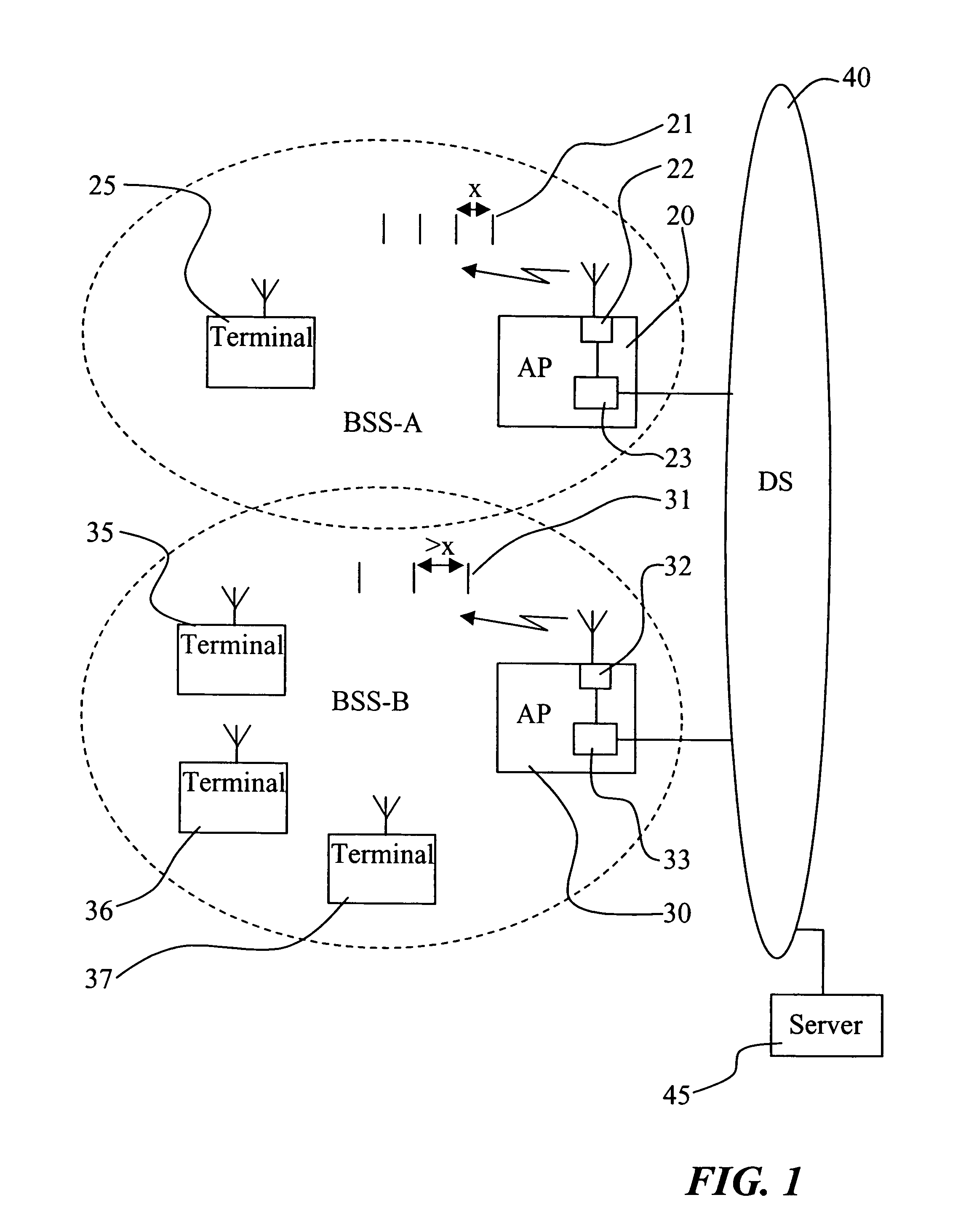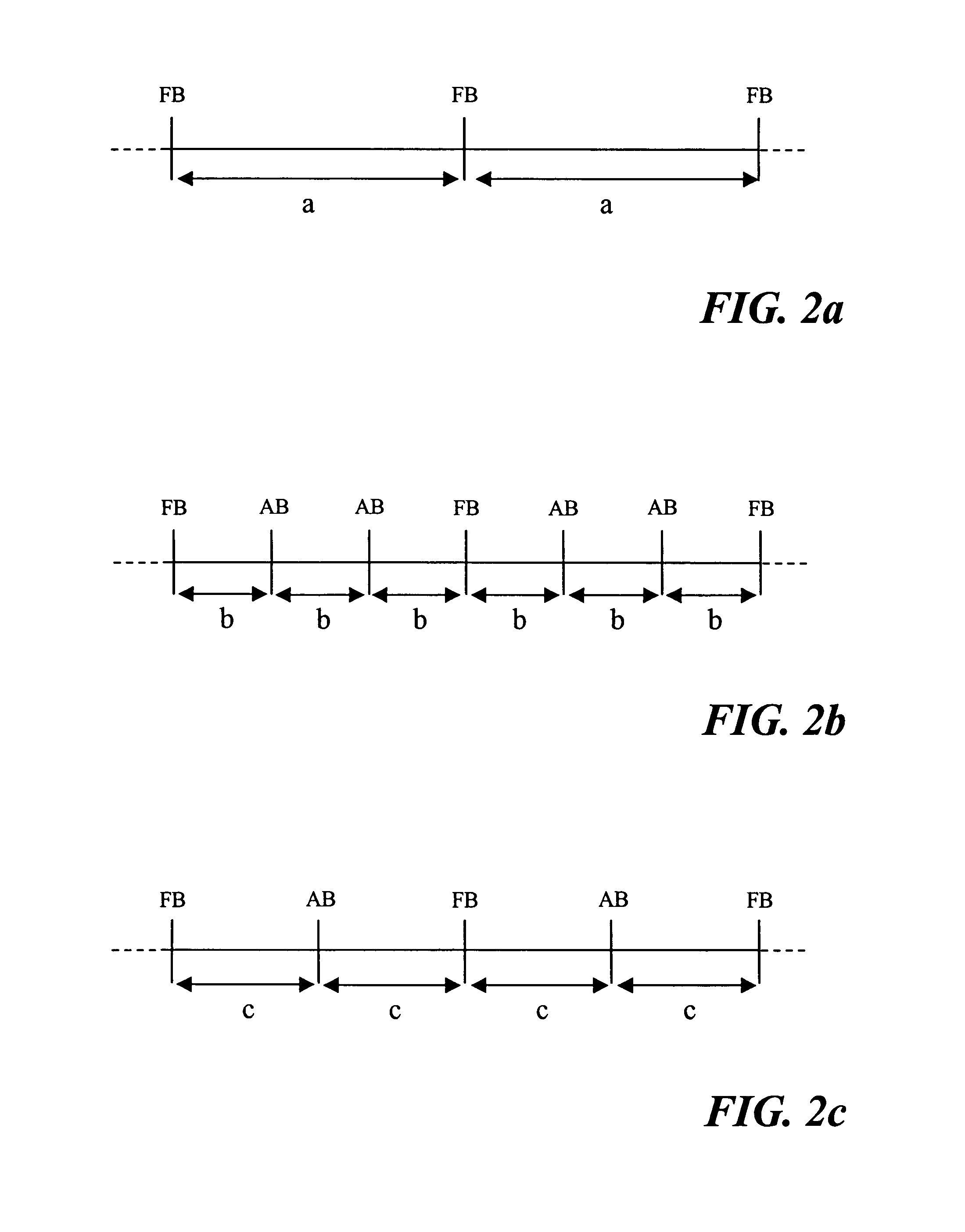Adaptive beacon interval in WLAN
a beacon interval and adaptive technology, applied in the field of adaptive beacon intervals in wlans, can solve the problems of terminal generation traffic, consuming battery power, reducing throughput, etc., and achieve the effect of improving the overall combined performan
- Summary
- Abstract
- Description
- Claims
- Application Information
AI Technical Summary
Benefits of technology
Problems solved by technology
Method used
Image
Examples
Embodiment Construction
[0027]FIG. 1 shows an exemplifying Wireless Local Area Network(WLAN) having a structure and operation in accordance with the present invention.
[0028]The WLAN in FIG. 1 includes two so-called basic Service Sets, BSS-A and BSS-B, each including an Access Point (AP) and WLAN terminals in communication with or serviced by the Access Point. BSS-A includes the Access Point 20 and the WLAN terminal 25, while BSS-B includes the Access Point 30 and the WLAN terminals 35, 36 and 37. The Access Points 20, 30 are connected to a Distribution System(DS) 40 which typically is a wired Local Area Network or some other kind of backbone network interconnecting the different Access Points of the WLAN. The DS is typically further connected to one or more servers 45 and / or further networks, e.g. the Internet or the like (not shown). The DS allows a WLAN terminal to communicate, via an Access Point, with other terminals connected to the WLAN or with servers 45 or other entities to which connection can be ...
PUM
 Login to View More
Login to View More Abstract
Description
Claims
Application Information
 Login to View More
Login to View More - R&D
- Intellectual Property
- Life Sciences
- Materials
- Tech Scout
- Unparalleled Data Quality
- Higher Quality Content
- 60% Fewer Hallucinations
Browse by: Latest US Patents, China's latest patents, Technical Efficacy Thesaurus, Application Domain, Technology Topic, Popular Technical Reports.
© 2025 PatSnap. All rights reserved.Legal|Privacy policy|Modern Slavery Act Transparency Statement|Sitemap|About US| Contact US: help@patsnap.com



